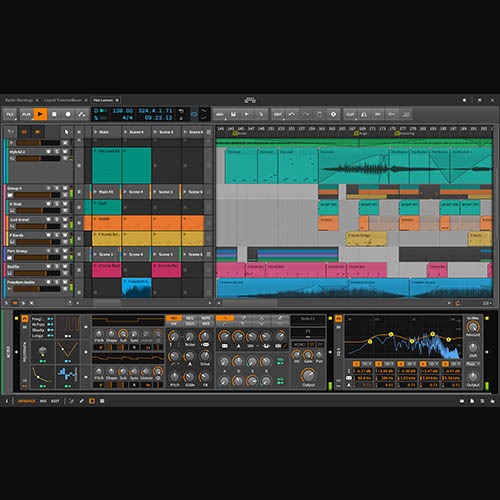
.png)
BITWIG STUDIO DISTORTION SOFTWARE
The global section of the device includes a final Gain setting and a global Mix control. Bitwig Studio is the first, and the flagship, product of Bitwig GmbH, a small music software house based in Berlin and founded by ex-Ableton engineers.

As always, extreme settings are useful while programming but less fruitful when used in music. Finally, there is a polarity control ( ø) for the phase of this section as well as a Mix control to make a blend of pre-cabinet sound (heard by itself at 0%) and cabinet processed sound (heard alone at 100%). To further shape the tone of the cabinet are a Color knob and a set of buttons (labeled A thru H), which offer eight discrete "hue" variations. This is my first post so kind of experiment: Dances with EQ - trick learned from Polarity to use the EQ+ with the Keytrack mod, but additionally made the peaks dance on an LFO, is better if you have aftertouch expression. Parameters include physical parameters of the cabinet's width, height, and depth, as well as the amount of sound reflection around the cabinet (which adds an acoustic phasing). And to further massage the overdrive, there is a Bias setting for offsetting the signal and a Sag for bending it back down when it flies too high (as indicated by the horizontal LED).Īfter the drive section is a POST-drive stage, which is identical in structure to the PRE-drive stage detailed above, along with a corresponding POST nested device chain at the far right of the device.Īs with any amplifier, the last stage is (a simulation of) the speaker CABINET. In addition to applying gain (via the eponymous Drive parameter) of up to 48 dB, a drop-down menu offers various clipping "models" to use, such as Class AB, Eulic, Fold B, etc. Next comes the DRIVE stage, whose purpose is to overamplify the incoming signal. Additionally, the far right of the device's interface has a nested device chain for adding additional processors to this PRE section. From buttery stereo field enhancement, to rhythmic reinforcement with tweakable LFO waveshape and swing, to more creative. The M(id) band is a bell filter with gain, frequency, and Q settings. Phasor is a powerful and dynamic studio tool, offering up a broad palette of modulation, filtering, and distortion effects thanks to its unique multimode design and deeply configurable parametric LFO. In this model, the L(ow) and H(igh) bands offer high- and low-pass filters, respectively, each with variable frequency, resonance, and slope settings. The PRE-drive stage provides optional L(ow), M(id), and H(igh) EQ stages. A processor that applies the character and idiosyncrasies of various instrument amplifiers to the incoming signal.


 0 kommentar(er)
0 kommentar(er)
